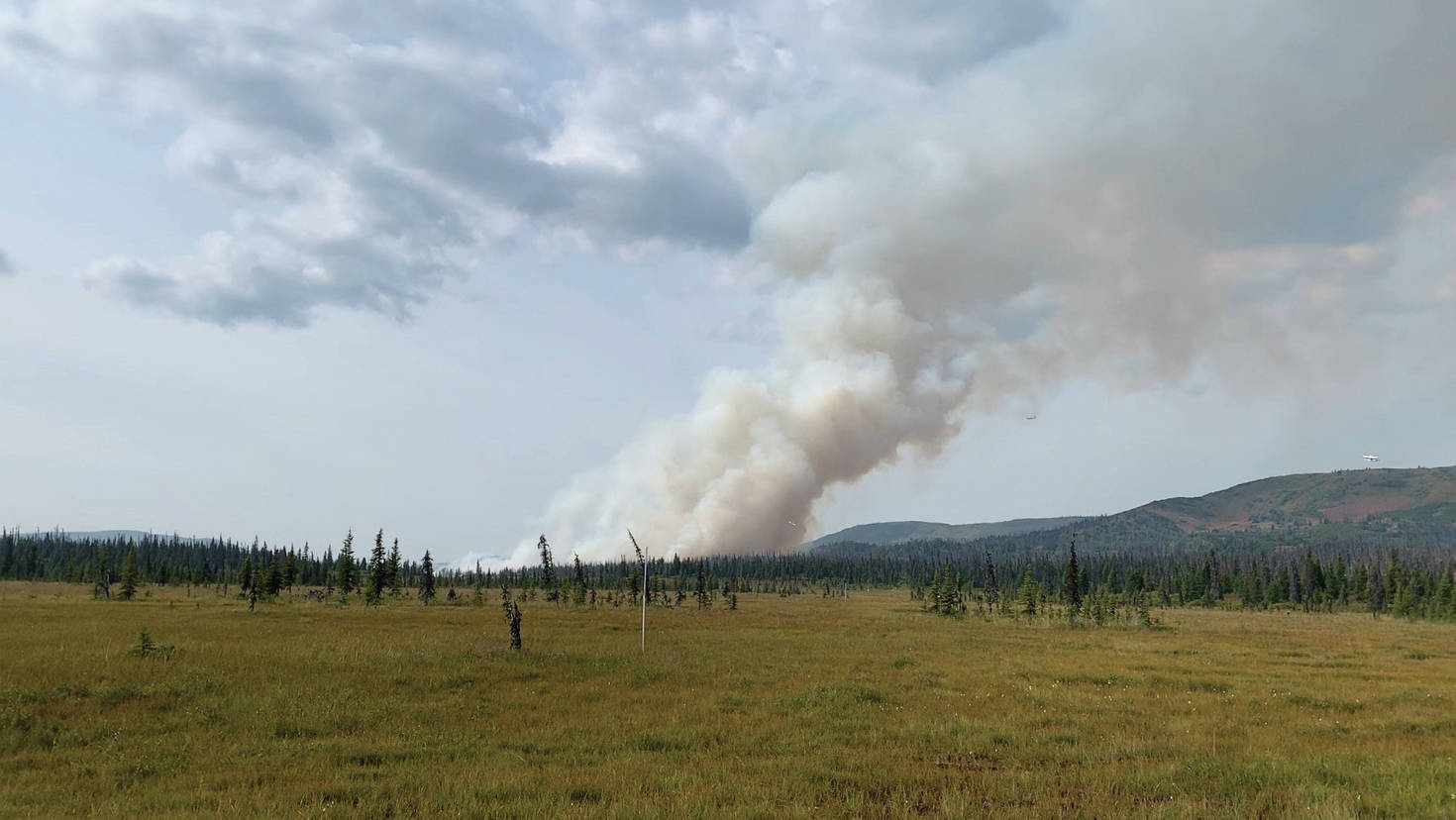In the midst of wildland fires at the south North Fork Road and along the Sterling Highway near Cooper Landing, firefighters on Monday, Aug. 19, responded to a third fire on the Kenai Peninsula at Caribou Lake about 25 miles northeast of Homer.
As of Tuesday morning, smokejumpers and air crews were on the 50- to 100-acre fire about 1.5 miles northwest of the lake. On Monday, two air tankers with retardant, an Alaska Division of Forestry helicopter and Fire Boss float planes dropped retardant and water on the fire burning in black spruce and grass. A bulldozer also is on scene to start building containment lines, said Sam Harrel, an Alaska Division of Forestry public information officer.
Crews worked to suppress the fire and protect about 30 cabins and homes in the popular recreation area accessible by four-wheeler and snowmachine trails from East End Road. Harrel said the fire did not immediately threaten the homes.
About 1 p.m. Aug. 19, Homer resident Ian Pitzman reported the fire via an inReach satellite communications device to his wife, Stephanie Pitzman, who then reported the fire to emergency dispatchers. Pitzman had been heading out to the family cabin with his daughter and some of her friends. Traveling by four-wheelers and an Argo all-terrain vehicle, he said they saw the fire across a swamp at the west end of Caribou Lake. At first the fire looked like fog or dust, but they soon realized it was a fire. The fire burned to the north and parallel to the lake, up toward the Box Hills, he said.
“We saw it from about a mile away,” Pitzman said in a phone interview on Tuesday. “I don’t know how long it had been going. It wasn’t very big when we saw it. … When I got close enough to realize it was well beyond anything I could deal with by myself and my water bottle, I turned around.”
Pitzman said he went in with his daughter and her friends to their cabin and pulled propane tanks away. When he checked on the fire about 45 minutes later, it had gotten bigger
“About another hour after that (at about 3 p.m.), when the planes showed up, the water bomber planes and the retardant planes, we decided we had better get out of there,” Pitzman said. “It was getting big fast, running up through the timber.”
The Fire Boss planes are float planes that can suck water up through the floats into compartments in the fuselage and then do water drops. The Fire Boss planes also worked the North Fork Fire.
As Pitzman drove out, he said he saw cabin owners going in to protect their property.
“I was very impressed with the airborne response, how quickly they got on the scene,” he said. “We were cheering them as they were dumping.”
This is a developing story and updates will be posted as they are received.

